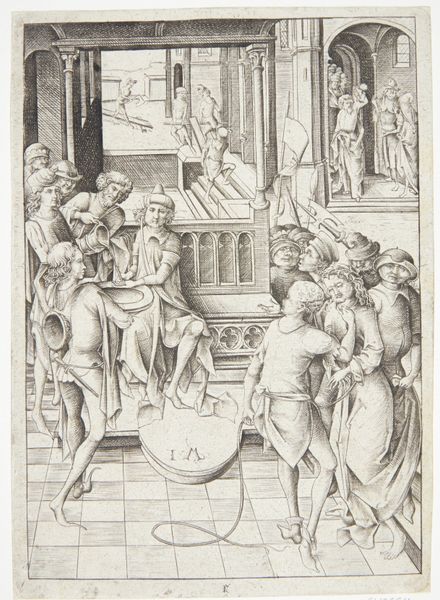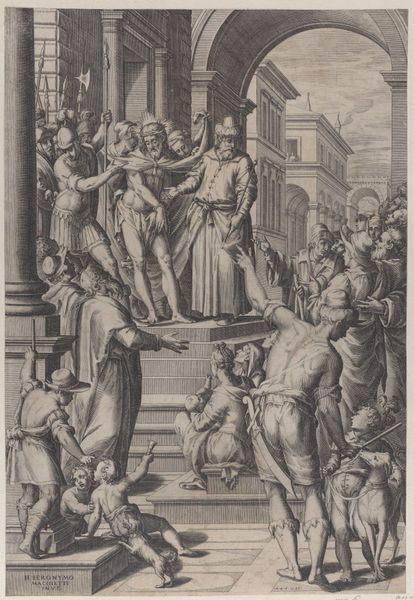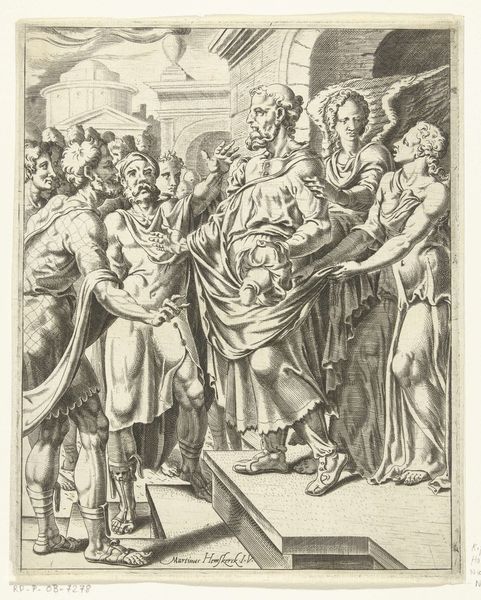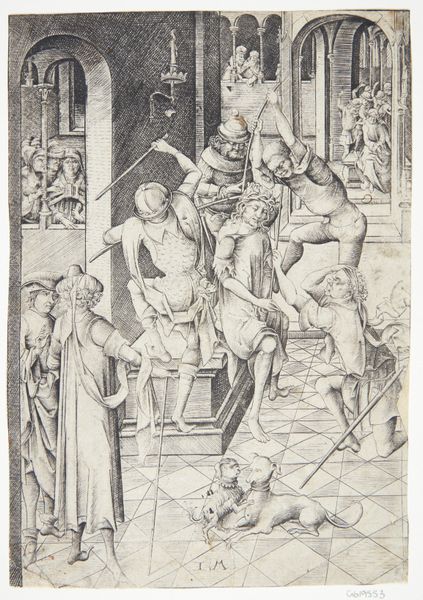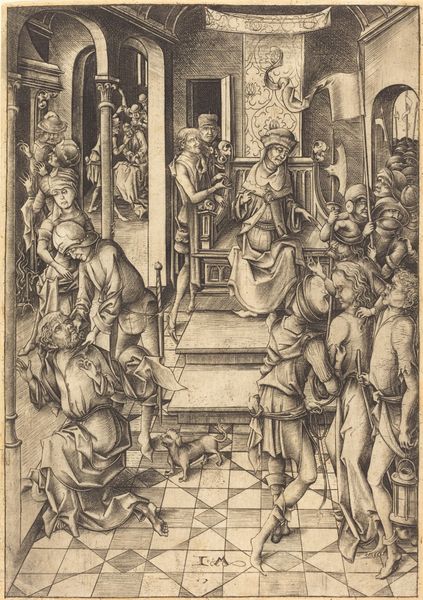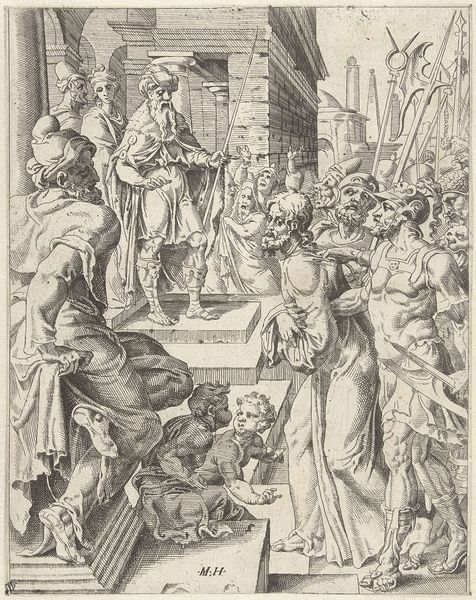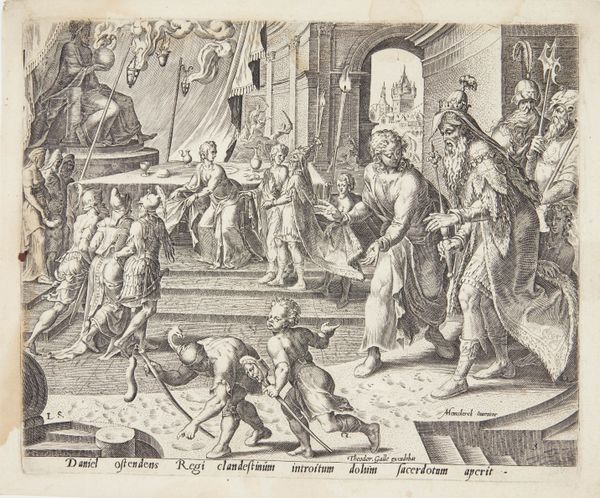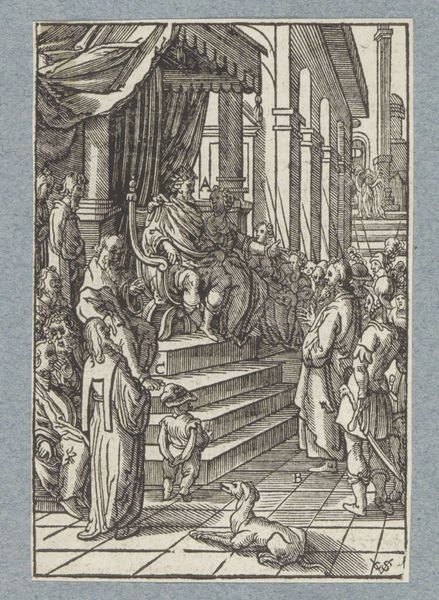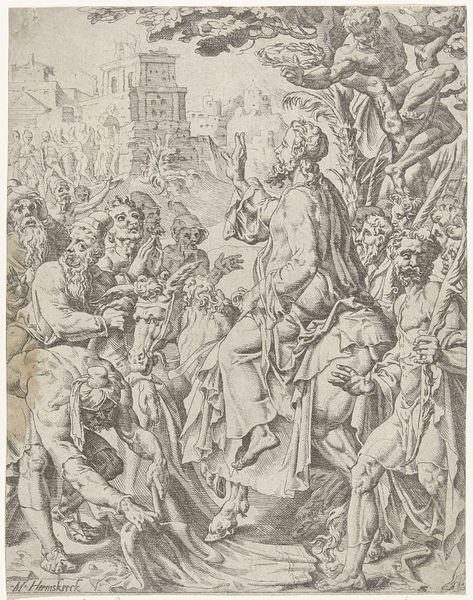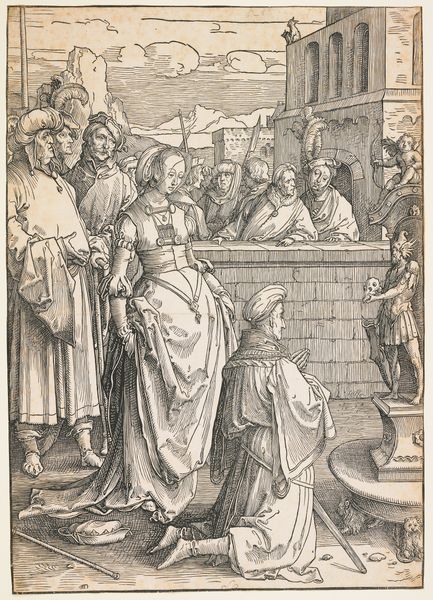
print, intaglio, engraving
# print
#
intaglio
#
figuration
#
11_renaissance
#
history-painting
#
northern-renaissance
#
engraving
Dimensions: 115 mm (height) x 90 mm (width) (bladmaal)
Curator: Look at this striking 1568 engraving entitled “Jesus for Pontius Pilatus.” It’s an intaglio print dating from the Northern Renaissance and currently held at the SMK, Statens Museum for Kunst. The scene, brimming with figures, illustrates a pivotal moment in Christian history. What strikes you initially? Editor: It feels claustrophobic. The artist really crams a huge number of figures into the space. Visually, there’s barely any room to breathe – everyone is leering. I can practically feel the hostile tension of this mob. The light, though stark, is so balanced. Are there particular symbols or traditions on display here? Curator: Absolutely. From my perspective, it is fascinating how this engraving offers a lens to scrutinize power dynamics in 16th-century Europe. Consider Pontius Pilate’s posture: the way he gestures and occupies a physically higher level than Jesus, visually reinforcing hierarchy. It’s also important to recall that the act of depicting the trial of Jesus has long been a locus of complex negotiations about guilt, justice, and cultural anxieties about otherness. Editor: The steps, so prominent in the composition, act like a stage, underlining the performative nature of justice… or perhaps the lack thereof? Jesus stands almost centrally, yes, but his gaze is averted, meek… while the spears and scrutinizing eyes of the soldiers surrounding him become their own visual language. I almost sense an entire culture's anxiety loaded into those images. Curator: Indeed, the artist really calls out the notion of sacrifice that serves entrenched interests in maintaining structures. Jesus, even then, has often served as an archetypal, yet revolutionary, sacrifice. Reflect upon how contemporary interpretations read themes of innocence and authority when analyzing works with such historical weight. The use of "the historical," especially that steeped in religious significance, often reflects prevailing sentiments. Editor: Looking at the piece again, the details of Pilate’s robes and the architecture versus the plain attire of Jesus feel crucial. What's intriguing here is not simply religious storytelling but the layered socio-political context encoded in the image itself. A subtle commentary using potent images. Curator: Yes! Through this single scene, we can explore lasting themes in contemporary thought: themes of marginalization, biased structures of power, and identity, that continue conversations initiated long before us. Editor: I will now find it hard to unsee the work without feeling uneasy. Thanks.
Comments
No comments
Be the first to comment and join the conversation on the ultimate creative platform.

